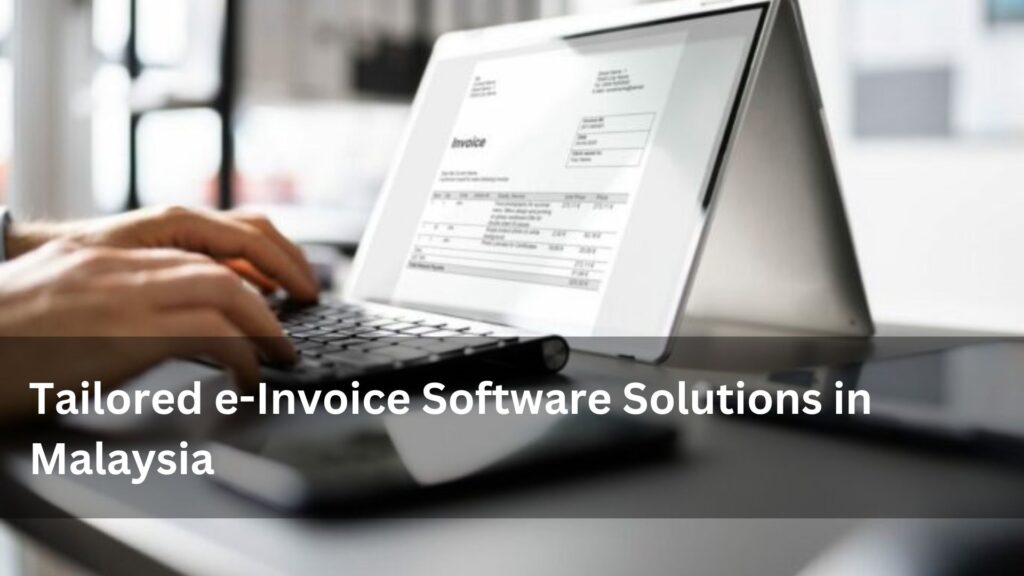As digital transformation continues to reshape business operations in Southeast Asia, Malaysia has taken a significant leap with the implementation of e-invoicing regulations through the Inland Revenue Board of Malaysia (LHDN). To ensure compliance and boost operational efficiency, companies are turning to Custom e-Invoice Software Malaysia to streamline invoicing workflows, enhance accuracy, and reduce manual errors. This article explores the benefits, features, and strategic reasons why businesses across industries are investing in Custom e-Invoice Software Malaysia tailored to their specific needs.
What is Custom e-Invoice Software?
Custom e-Invoice Software Malaysia refers to personalized, software-based invoicing systems designed to meet the unique needs of Malaysian businesses while aligning with the government’s e-invoicing framework. Unlike generic tools, these systems can be configured to handle industry-specific tax codes, client billing cycles, payment gateways, and LHDN submission formats.
Key features include:
Custom invoice templates with localized tax rules (SST, GST, etc.)
Seamless integration with accounting, ERP, and CRM systems
Real-time validation and e-invoice transmission to LHDN
Secure data storage and audit trails
Why Businesses in Malaysia Need Custom e-Invoice Software
The transition to mandatory e-invoicing in Malaysia means that businesses can no longer rely on manual or outdated methods. Custom e-Invoice Software Malaysia offers numerous advantages, including:
Regulatory compliance: Ensures your invoicing aligns with LHDN requirements.
Efficiency gains: Automates repetitive tasks, saving time and reducing errors.
Improved cash flow: Accelerates invoice delivery and payment cycles.
Scalability: Grows with your business, handling increasing invoice volumes.
Tailored solutions ensure that businesses don’t have to adapt their processes to the software; instead, the software adapts to them.
Compliance with LHDN Requirements
With the LHDN’s phased rollout of mandatory e-invoicing across different business sizes and sectors, compliance is critical. Custom e-Invoice Software Malaysia is designed with these local regulations in mind.
Important compliance features include:
Auto-generation of e-invoices in LHDN’s required format (JSON/XML)
Real-time API connection with MyInvois Portal
Tax calculation and digital signature integration
Secure archiving in accordance with LHDN retention policies
By ensuring end-to-end compliance, businesses avoid costly penalties and audits while maintaining credibility with customers and partners.
Benefits of Choosing Custom Over Off-the-Shelf Solutions
While off-the-shelf software might offer quick deployment, they often fall short in meeting specific business needs. Custom e-Invoice Software Malaysia provides several unique benefits:
Tailored functionality: Only include features that are relevant to your business.
Integration-ready: Connects with your current software ecosystem.
Cost-effective: Reduces long-term costs by eliminating the need for workarounds.
User experience: Designed with your team’s workflow in mind, increasing adoption and productivity.
This customization ensures that businesses of all sizes, from SMEs to enterprises, get the maximum ROI from their e-invoicing software investment.
Industry Applications of Custom e-Invoice Software in Malaysia
Different industries in Malaysia require different invoicing capabilities. Custom e-Invoice Software Malaysia can be developed to address these sector-specific needs:
Retail: Multi-outlet invoicing, integration with POS systems
Manufacturing: Bill of materials (BOM)-based invoicing and tax compliance
Logistics: Mileage-based billing, fuel surcharge management
Professional Services: Time-based billing, client retainer management
eCommerce: Cart-based dynamic invoicing, payment gateway integrations
Custom solutions are vital in adapting to the diversity and complexity of these industry needs.
Integration with Existing Business Systems
A key advantage of Custom e-Invoice Software Malaysia is its ability to integrate smoothly with existing tools. Whether your company uses SAP, QuickBooks, Xero, or a proprietary ERP, custom solutions can be built for compatibility.
Common integrations include:
Accounting software (for seamless reporting and reconciliation)
CRM (to automate client-specific invoicing)
Payment gateways (to link invoices with online payments)
Inventory management systems
This interconnected system improves overall business efficiency and reduces the risk of data duplication or loss.
Security and Data Protection
Data privacy and security are top concerns for any business dealing with financial transactions. Custom e-Invoice Software Malaysia is developed with security at its core.
Key security features include:
End-to-end encryption
Two-factor authentication
Role-based access controls
Data backups and redundancy protocols
Compliance with PDPA and other relevant laws
This ensures that sensitive information remains confidential and secure, both during invoice generation and transmission.
Choosing the Right Software Development Partner
Developing Custom e-Invoice Software Malaysia requires a partner that understands not just coding but also Malaysian tax laws, LHDN integration, and your industry’s operations.
Look for a development partner that offers:
Proven experience in finance or tax tech
Familiarity with LHDN’s technical standards
Support and maintenance packages
Scalable architecture for future upgrades
Engaging a local partner also helps with communication, speed of deployment, and technical support in your time zone.
Conclusion
As Malaysia transitions into a digital-first economy, adopting Custom e-Invoice Software Malaysia isn’t just a regulatory necessity—it’s a competitive advantage. Whether you’re a small startup or a growing enterprise, having invoicing software that’s tailored to your business needs can streamline operations, enhance accuracy, and ensure compliance with LHDN’s evolving standards.
By investing in the right custom solution, you’re preparing your business for seamless, scalable, and secure financial transactions—today and in the future.










